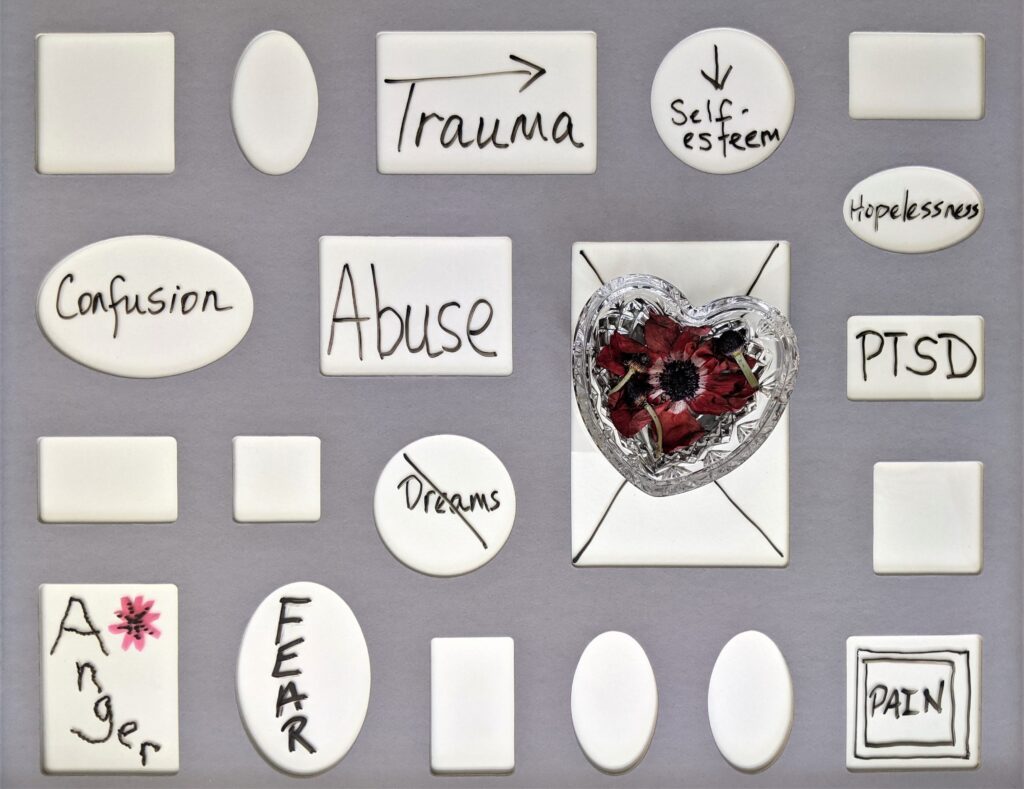
Big T trauma vs. little t trauma, what’s the difference?
Table of Contents
Trauma is any adverse experience that generates a stress response and activates survival mode. Notice I said it is the experience. Trauma is not the event itself, it’s how your brain and body experience and respond to the event. Trauma can be broken down into two categories, big T trauma and little t trauma.
Big T trauma vs. little t trauma
Big T trauma is what most people think of when they think of a traumatic experience. It’s a larger event like a plane crash, natural disaster, car accident, death of a loved one, or sexual assault as a few examples. There is also a distinction between acute big T trauma and chronic big T trauma. Acute big T trauma would be those single incidences like a plane crash. Chronic big T trauma would be repeated physical or sexual abuse. Chronic big T trauma is ongoing, repeated exposure. Little T trauma can often be overlooked as traumatic experiences. The ending of a relationship, a pet dying, losing a job, or messing up in a presentation are examples of little t trauma.

A quick side note on little t trauma. Little t trauma can sometimes evoke more self-deprecating thoughts and self-gaslighting. This is because little t trauma is often disregarded, which leaves us feeling like we are over exaggerating, or we try to convince ourselves that the experience wasn’t as bad as we thought. We tell ourselves we shouldn’t feel this way or that we just need to get over it. This can also happen with big T trauma; however, big T trauma is often validated more as a traumatic experience, which reassures us that we are not over exaggerating in our responses.
How your brain responds to trauma big T trauma and little t trauma.
I want to highlight again that trauma is not the event itself. It is the experience and how your brain and body respond to the event. I say this again, because your brain responds to trauma the same way regardless of if it is big T trauma or little t trauma. There are, however, some differences in how your brain and body react to chronic ongoing trauma. I expand on this more here.
Traumatic events overwhelm our brain and cause disruptions in the normal processing patterns. When our brain is overwhelmed by a highly emotional and alarming event, the left side of our brain shuts down. The left side of the brain is responsible for logical reasoning, sequential processing, time awareness, and analysis of information. So, the event happens, our brain gets overwhelmed, and the left side of the brain shuts down. We have now lost the ability to process the event, store it in a sequential manner, identify a time stamp for the event, and use logic to help balance the overwhelming emotions we are facing.

What does this mean?
This means that we are left with fragmented pieces of memory that our brain cannot properly process. A particular smell, place, person, or bits of the event are all separate. Sometimes the brain can process through these fragments after the event is over and we can heal and move forward. However, sometimes our brain gets stuck in processing because the fragments are triggering the flight or fight response which then shuts down the left side of our brain. And the cycle continues.
Can the cycle be broken?

Absolutely! The cycle can be broken. We must teach our brain that we are safe when we revisit those fragmented pieces of memory to fully process the event and heal from the trauma. The safest way to process through trauma is with a therapist. Outside of therapy you can focus on trauma grounding activities such as yoga (mind-body connection is huge), meditation, mindfulness, journaling, deep breathing, and positive affirmations and mantras. These activities help to deactivate the flight or fight response and create the safety that your mind and body are searching for.
